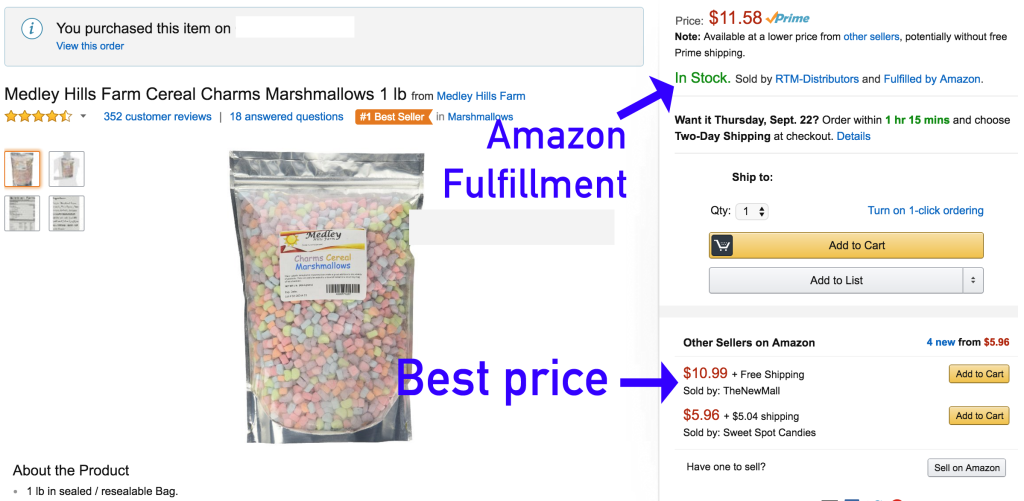The First Choice Amazon Gives You To Buy Isn’t Necessarily The Cheapest
E-commerce giant Amazon prides itself on being a customer-centric company, but in Amazon’s world, that generally means encouraging its shoppers and its third-party merchants to buy more services from Amazon. That isn’t necessarily a bad thing for consumers, but it doesn’t mean that we get the cheapest prices, either.
ProPublica analyzed this data, and started by looking at the price and vendor displayed in the “buy box” on the right of an item’s page. While old hands at Amazon shopping know that more options for item condition and seller type are just a click away, a new shopper might not.
While items are ranked according to price and shipping total, there’s something about this that longtime Amazon shoppers might not realize. Amazon and “Fulfilled by Amazon” merchants are always listed as having no shipping, even though that’s technically not true. Yes, it’s free if you’re a Prime member or have always simply waited to make a purchase until you hit the free shipping threshold.
Here’s a visual example. I once made a terrible mistake and bought an entire bag of dehydrated marshmallows, and Amazon keeps trying to get me to buy them again. If you look at the “buy box,” the default version of the item is 59 cents more expensive than the actual cheapest option.

There are two reasons why Amazon may have chosen this vendor to be the default one chosen for customers. First, the seller at that price is the official distributor of the item, and others listed on the site are resellers, something that the company warns about in its listing.
The other reason is that Amazon is getting a bigger cut of that particular sale. While Amazon itself doesn’t sell the marshmallows, the distributor does send them to Amazon’s warehouses for distribution, which is called Fulfilled by Amazon shipping. It means that Amazon takes a little bit of a bigger cut from that sale, depending on how many sales the vendor makes, total, and on the size of the item.
Amazon, for its part, said in a statement that while price is one factor in how it chooses which merchants to promote, it isn’t the only one. “Customers trust Amazon to have great prices, but that’s not all — vast selection, world-class customer service and fast, free delivery are critically important,” the company pointed out, and those are all factors in deciding who gets that top spot.
UPDATE: Amazon sent us this statement specific to the issue of how it displays combined shipping costs and item prices.
With Prime and Super Saver Shipping (which requires no membership and ships orders above $49 for free), the vast majority of our items ordered – 9 out of 10 – can ship for free. The sorting algorithms the article refers to are designed for that 90% of items ordered, where shipping costs do not apply.
If the overwhelming majority of Amazon’s sales are to people who either have Prime memberships or wait until they have $49 worth of items before they click “Check Out,” then it makes sense that item pages are set up and prices displayed in the way that’s the most useful to those customers.
Amazon Says It Puts Customers First. But Its Pricing Algorithm Doesn’t. [ProPublica]
Want more consumer news? Visit our parent organization, Consumer Reports, for the latest on scams, recalls, and other consumer issues.

